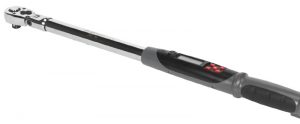Neil Kidby, Service Tool Specialist at Sealey, looks at why aluminium suspension components are more frequently used in vehicle designs and the new challenges this has created for the workshop technician.
Over the past 20 years or so, vehicle suspension components have changed significantly in both their design and structure. Extra components and convenience features being added to vehicles in recent years has resulted in a need to reduce weight in other areas.
Modern materials
Aluminium suspension components are one such area and are now a common feature on most modern cars. This material has two benefits:
1. It is much lighter than steel and cast iron, so a reduction in un-sprung weight increases the quality of the vehicle’s ride and its handling characteristics are also improved. This is achieved by not only the
reduction in weight, but also being able to use lower spring rates and more comfortable dampening valves within the shock absorber units. Of course, there is also an overall  weight saving. Published
weight saving. Published
figures suggest that for every 10% reduction in vehicle weight, there can be up to 7% saved in fuel costs.
2. It’s been proven that aluminium transmits less road and tyre noise to the passenger compartment; this means less sound deadening can be used in the vehicle’s manufacture, again saving weight.
Strong stuff
For the vehicle technician aluminium components do have to be viewed in a slightly different way to steel and cast iron components. Most aluminium suspension components are forged and then heat-treated. This makes them as strong as, or sometimes stronger than, steel or cast iron. By their nature, aluminium components perform differently to steel or cast iron if they’ve undergone any form of extreme stress like the road-wheel hitting a curb or accident damage, for example. The most likely outcome is that the comp onent will crack or break, but these cracks can be difficult to see. These types of components cannot be subjected to any form of welding repair; this is because they’re more heat sensitive than steel or cast iron. The heat from welding can alter the temper of the component and make it more brittle.
onent will crack or break, but these cracks can be difficult to see. These types of components cannot be subjected to any form of welding repair; this is because they’re more heat sensitive than steel or cast iron. The heat from welding can alter the temper of the component and make it more brittle.
Better bolts
Aluminium suspension components require specific bolts and correct tightening procedures when being fitted. Typically, you’ll see coated threads, thread-locking systems and torque-to-yield (TTY) bolts
(sometimes referred to as ‘stretch’ bolts). TTY bolts are torqued beyond their state of elasticity and therefore become permanently elongated when fitted. It is, therefore, essential to torque these types of
bolts by following the correct procedures and by using a suitable torque wrench, such as the Sealey STW309. This torque wrench displays not only torque settings but also an angle range of up to 360˚.
TTY bolts have two distinct advantages. Firstly, they can apply the same clamping  loads as a larger and heavier bolt. Secondly, the clamping loads are more consistent and controllable, and are therefore able to bring a more even and reliable load onto the suspension component.
loads as a larger and heavier bolt. Secondly, the clamping loads are more consistent and controllable, and are therefore able to bring a more even and reliable load onto the suspension component.
The composition and heat treatment of TTY bolts and regular bolts is quite different, so it is normally possible to distinguish one from the other by their appearance. TTY bolts often have an inset hex, 12 point hex, multi-spline or torx type head.
Best practice
It is vital to follow the manufacturer’s correct procedures and tightening torques for any suspension component that has to be replaced, and this applies no matter what type of fixing is used. As a general rule, if the manufacturer gives an initial torque setting along with a final tightening specification shown in degrees, it is a TTY bolt. It is also worth remembering that components can be damaged if a tightening sequence is not followed correctly.
TTY bolts are usually installed dry and this is because lubricants reduce friction when a bolt is tightened. This reduction in friction actually increases the torque load on the bolt during tightening, which may lead to excessive stretching and could cause it to break.
Manufacturers sometimes specify a TTY bolt as a “use once only” bolt, mainly because the tightening process causes the bolt to stretch to its elastic limit, so re-using it will certainly result in an incorrect clamping force being applied to the component, and could cause the bolt to break during tightening.











